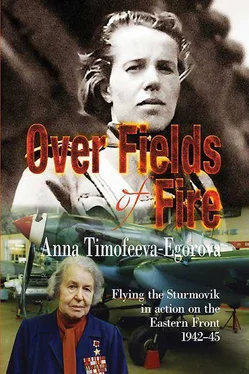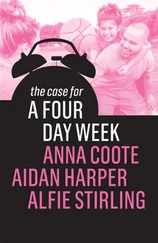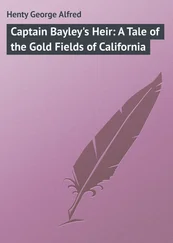But our squadron commander would not live to see Victory. Semyon Andrianov was killed carrying out a combat mission 8 kilometres west of the Stanitsa Krymskaya. I was told that on that day a sixer of Sturmoviks was ordered to do a bombing raid on a concentration of tanks. The mission was set up by the Regimental Chief-of-Staff Yashin and he appointed Andrianov a group leader. The group was escorted by four LaGG-3 fighters from a fraternal regiment. They were to strike at the tanks from low altitude, for the weather was really complicated — the clouds hung just above the ground and it was raining… Our arms specialists loaded the planes with PTABs 131 131 Anti-tank bomblets.
— 200 or 250 in each compartment, loaded the cannons and machine-guns, fixed the rockets, and Andrianov took off exactly at the designated time.
By the way, the Sturmoviks could not always use all their capabilities when striking from low altitudes. For example, strikes by PTABs upon tanks were usually successful, but 100-kilogram bombs had to be dropped with delayed fuses — otherwise your plane might be damaged by shrapnel from your own bombs. And the accuracy of bombing from these heights would be sharply reduced. It was very hard to use cannons, machine-guns and rockets when attacking from such low level. One had to gain height, for the tank cannons had enviable accuracy! But Andrianov’s group had no height, and the comesk knew the mission had to be accomplished at any cost. He accomplished it at the cost of his own life…
28. The aerial gunner and the technicians
In our regiment I flew an old single-seater Sturmovik the longest. It seemed to me much lighter and more agile than the two-seater. But really you just needed to get used to it! And now, when I had returned from the navigation course, I was going to fly a two-seater and Boiko the Adjutant of our 3rd Squadron has suggested I choose an aerial gunner. There also was another important factor that has influenced me regarding this issue. In one of the most recent sorties I had quite a close shave with Messers. We’d been flying to Temryuk back then — we had to destroy a bridge over the Kuban river. It seems like it wasn’t long ago when Karev with his group had smashed it to pieces. But the damned Fritzes have repaired it yet again! Damn it, how long should we be bothered with it?
Temryuk was situated almost on the coast of the Azov Sea, and the Kuban river flows west of it. At this particular place, a major highway leads from the berth on the Choushka Spit up to the Blue Line. The bridge was surrounded by countless ack-ack batteries, and along the Blue Line there were plenty of anti-aircraft installations. We had already lost three crews over Temryuk: those of Podynenogin, Mkrtumov and Tasets. Our group was led towards the bridge by Captain Yakimov. A tall, sporty guy, with somewhat lordly manners, Yakimov was always keeping himself a bit aside: as if he was looking down on us a bit — although in terms of age he was not much older than us. Having gone over the mission plan with us, he has established an order of the flight and for some reason placed me (flying a single-seater!) to bring up the rear of our formation of six. But orders are not for discussion, and we took off. A quartet of LaGG-3 fighters provided a cover but I have to admit: I didn’t feel comfortable bringing up the rear without an air gunner…
After we dropped the bombs on the bridge and leaped out over the Azov Sea our group was intercepted by Messerschmitts. The LaGGs were already tied up in a dogfight with German fighters somewhere aside, so it was up to our air gunners to get busy. They did it with quite some skill, repelling the pressing Messers. Several times they tried to split the Sturmoviks ’ formation, but in vain. We flew tightly, wingtip to wingtip. And it was just me, my plane, that was not protected by a gunner to its rear. No wonder then they had chosen me as a target. I saw a tracer pass on my right, and broke left but too late: a second burst hit my Ilyusha . Following that, the ‘Messers’ had broke, turned and hurled themselves into a second attack from both sides at once, aiming at my plane. Being aware of the power of Sturmovik ’s forward-firing weapons, the Germans were avoiding my forward-facing zone. Instead, they were hitting my plane (unprotected from the rear) coming at its tail. Once again I saw a stream of fire coming from short range… At this moment I hit the engine boost and simultaneously pushed the control column away. Speeding up I overtook my group and tucked my plane between the leader and his wingman on the right — Volodya Sokolov. And it saved me.
But during debriefing I had to withstand quite a set of reproofs.
“You breached battle formation”, Captain Yekimov rapped his words out, enunciating each word and each letter. “Pilot Sokolov might have taken you for the enemy and struck you with his cannons and machine-guns!”
But I had an impudent question to ask a captain: “When seeing the Fascist planes raking me with fire, why didn’t you re-form the group into a defensive circle, then drawing a fight to our side of the front?”
Silence fell. Yekimov blushed. And then, breaching the deathly hush, Volodya Sokolov stood up for me. “Comrade Captain! You said I could have taken Egorov’s Sturmovik for an enemy plane. But could I really? Isn’t it seen how the edges of her blue kerchief are sticking out of the earphone helmet? She wears it instead of the liner!”
The pilots burst into laughter, and the heavy atmosphere was dispelled. Battle-hardened airmen, as a rule, recall moments of mortal danger happily. The chill of it felt in their hearts is replaced by the joy of being able to see, to breathe, to live! Maybe that’s why they talk jokingly about a mortal danger they’ve experienced and left behind.
After this incident I was issued with an Il-2 with a cockpit that would fit an aerial gunner. Incidentally, even prior to leaving for the training course I had flown this plane with various aerial gunners available. And not just with the gunners! Once I stealthily took the plane mechanic Tytyunnik for a combat sortie. In fact, air gunners were trained at short-time classes. Anyone who had the will to fly and knew how to shoot could apply. Among those, I have seen engine technicians, mechanics, flight observers from obsolete types of planes, even machine-gunners from ground forces. The future gunners had no flying practice and they knew nothing about the complicated rules of shooting at aerial targets, but all of them had a huge desire to hit back at the Fascists till the victory. In those days, all the regiments of our divisions began to sing an unpretentious song about the Sturmovik gunners:
‘Il’ is turning, ‘Il’ is flying above a mountain,
A heroic pilot is in control.
There’s a young chap on the rear seat
He is an aerial gunner…
There were girls among the ‘young guys’ as well — Sasha Chouprina, Lena Lenskaya. And some ‘young guys’ were old enough to be our fathers! In our regiment, for example, there was an aerial gunner — a former flight observer Serguey Michailovich Zavernin from the village of Korpogory in the Archangelsk Region. To cut a long story short, when I had returned from the navigation course and the squadron adjutant invited me to choose a gunner I was surprised. “What do you mean ‘choose’? If there’s one available, send him to me. But to get one from a crew that has already fallen into step — that is no good!”
“Well, we have one not attached to any crew. But he is… he is a bit of a queer chap. We want to transfer him out of the regiment to the ground forces. But since you are Deputy Comesk now, you have a right to pick a better gunner.”
Читать дальше












